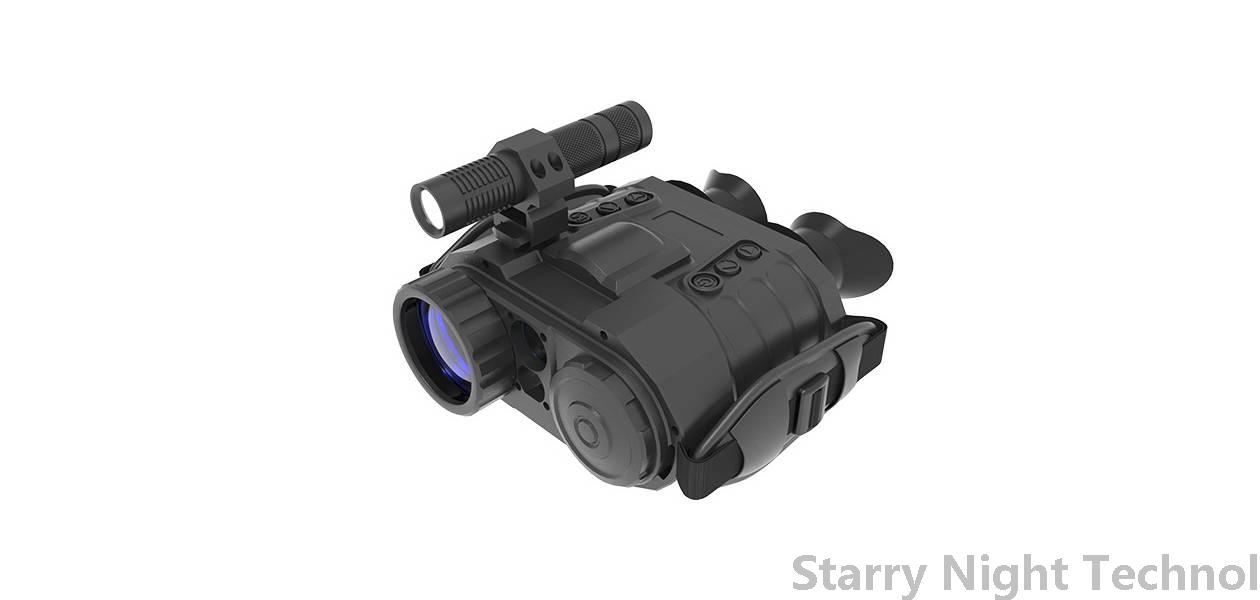Night Vision Devices: Enhancing Awareness and Security in Military and Medical Fields
1729580427000

In an age dominated by rapid technological advancements, night vision devices have emerged as crucial tools, particularly in military and medical applications. These devices extend human capabilities by allowing vision in low light conditions, a quality increasingly imperative in fields where situational awareness and precision are vital.
### The Evolution of Night Vision Technology
The journey of night vision technology can be traced back to World War II when the first generation of night vision devices was developed. Initially, these early systems employed active infrared illumination, which required an additional light source, making them relatively easy targets, particularly in the tumultuous realities of battlefield situations. However, advancements in technology have since birthed multiple generations of night vision.
By the late 20th century, the introduction of "image intensification" and "thermal imaging" technologies revolutionized night vision capabilities. Image intensifiers amplify available light, including moonlight and starlight. In contrast, thermal imaging detects the heat emitted from objects, allowing operators to visualize warm bodies even in total darkness. Current-generation systems utilize advanced materials and miniaturization techniques, resulting in lighter, more efficient devices that can be easily integrated into various operational frameworks.
### Military Implications
In military applications, night vision devices have become indispensable. The ability to operate effectively at night gives troops a strategic advantage, allowing for stealth operations, reconnaissance, and combat scenarios that were previously thought impossible. Enhanced low-light vision improves situational awareness, which can be crucial when navigating uncertain environments or executing complex missions.
Modern military night vision technologies range from monocular goggles used by individual soldiers to sophisticated systems installed on drones and vehicles. The tactical uses of these devices extend beyond combat: they play a critical role in search and rescue missions, surveillance operations, and border security.
By providing soldiers with the capability to see clearly in the dark, night vision devices dramatically reduce the risk of ambush. They also minimize the chances of civilian casualties by allowing for heightened accuracy when targeting potential threats. The result is a safer environment for both military personnel and non-combatants, as well as improved mission success rates.
Furthermore, as adversaries gain access to similar technologies, the relentless arms race in optics means that continual advancements will be necessary, such as the exploration of augmented reality capabilities in future night vision systems.
 While night vision devices have long been synonymous with military operations, their applications in the medical field are steadily increasing. Healthcare professionals, particularly those working in emergency and critical care situations, benefit from enhanced vision capabilities during nighttime operations or in low-light environments.
While night vision devices have long been synonymous with military operations, their applications in the medical field are steadily increasing. Healthcare professionals, particularly those working in emergency and critical care situations, benefit from enhanced vision capabilities during nighttime operations or in low-light environments.For instance, night vision goggles can be invaluable in emergency departments where light can often be disruptive. They allow doctors and nurses to have a clear view of the patient while minimizing the disturbance caused by overhead lighting. This capability is particularly essential during surgeries that may need to be conducted in low light or emergencies in rural locations that lack adequate illumination.
Telemedical applications are also emerging. Medical professionals in remote locations can utilize night vision technology to consult specialists who can gain critical visual information without the need for excessive lighting. Such innovations can potentially save lives, especially in time-sensitive scenarios akin to trauma care.
In addition, night vision technology is making strides in ensuring the safety of healthcare workers in hazardous environments. For instance, workers in the field during disaster relief efforts can benefit from enhanced night vision, providing them with better situational awareness and allowing safer navigation in conditions often fraught with uncertainty.
### Challenges and Regulatory Considerations
Despite the myriad advantages of night vision devices, challenges remain. The market is filled with a range of options, leading to confusion regarding the efficacy of different devices. Furthermore, with many organizations utilizing advanced optics, the issue of regulation becomes crucial. Regulatory bodies must ensure that night vision technology is safely employed to prevent misuse, particularly in civilian contexts.
Moreover, balance between utility and ethics must be addressed, especially in military contexts where the specter of invasiveness and surveillance looms large. The discussion surrounding the implications of night vision devices on privacy rights is becoming increasingly pointed, and committees dedicated to ethics in military technology must navigate these complex conversations.
### The Future of Night Vision
The future of night vision devices is promising, with ongoing research into innovative materials such as graphene that could further enhance image resolution and sensitivity. The trend toward more integrated solutions, such as combining night vision with augmented and virtual reality, will likely continue to evolve, creating systems capable of providing contextual overlays of information during nighttime operations.
In conclusion, night vision devices have transcended their initial military applications to become indispensable tools in the medical field as well. As technology continues to progress, these devices will play a significant role in enhancing awareness and security, offering greater protection for military personnel and improved patient care in critical medical scenarios. With careful consideration of ethical and regulatory frameworks, the future of night vision technology promises to illuminate even the darkest environments.
What are some useful night vision devicesStarry Night Technol

